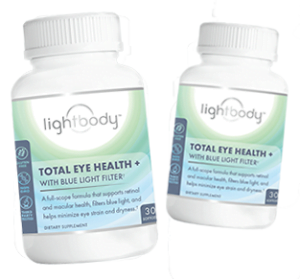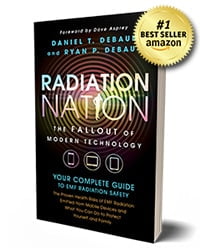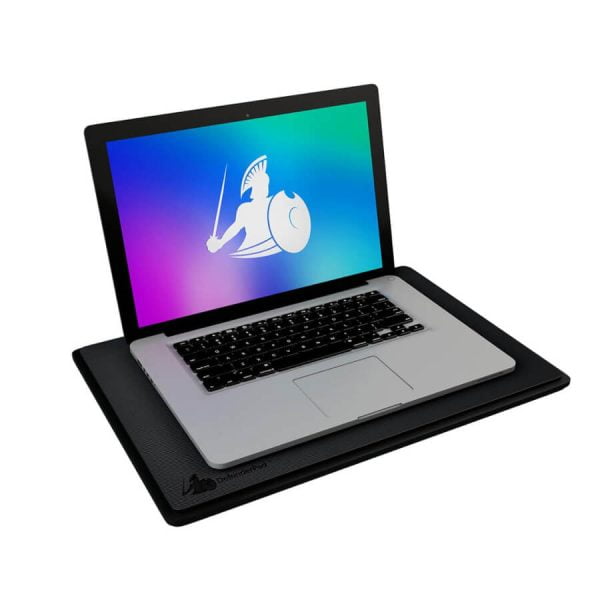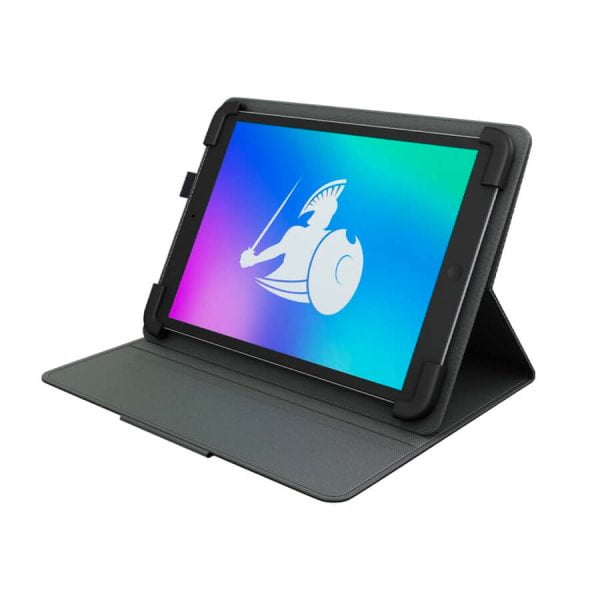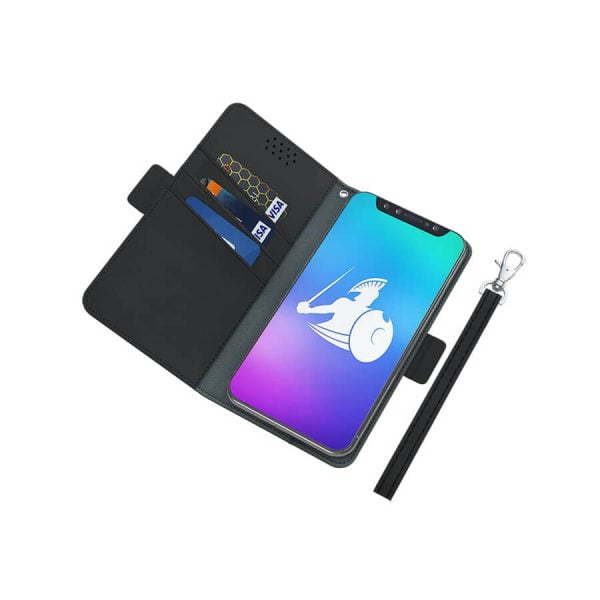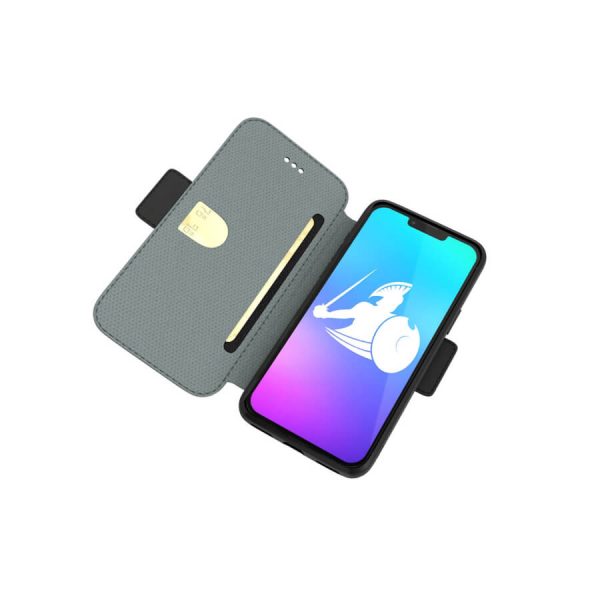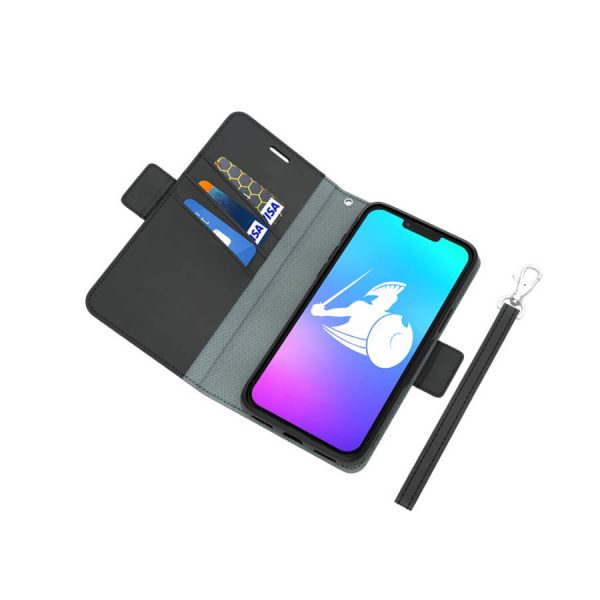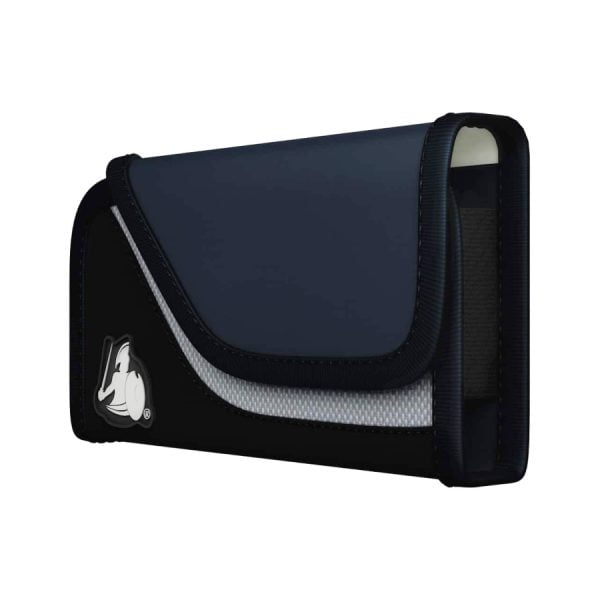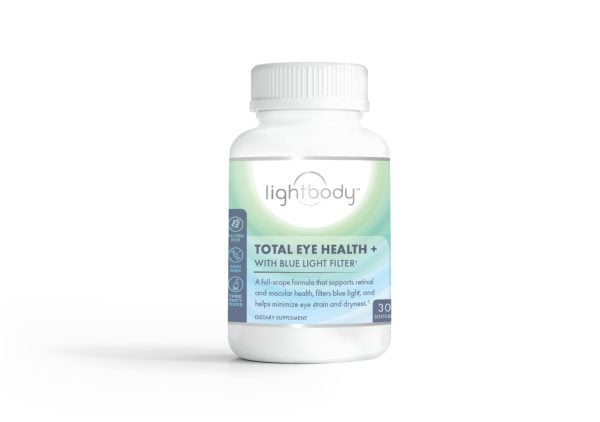Your cart is currently empty!
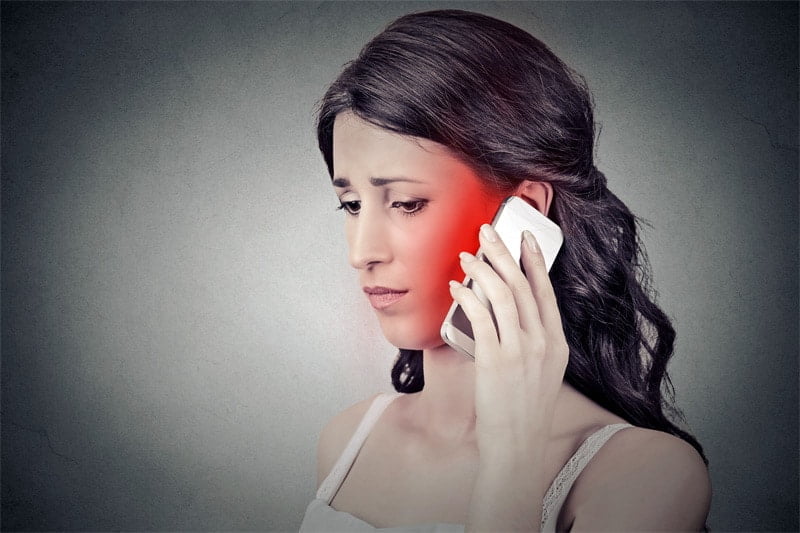
iPhone Radiation: Easiest Ways to Protect Yourself & Reduce Exposure
Last Updated on October 3, 2023

You don’t have to be a tech head to understand this basic fact: people love Apple products.
Most of us have that friend who is willing to wait in line for hours to get their hands on the newest iPhone model on the day it’s released, or a coworker who can’t seem to keep quiet about why they switched from their PC to a Mac and why you should, too.
Sure, not every person who owns an Apple device has that die-hard, fiercely-loyal, “I dare you to change my mind about how Apple beats everything else out there any day of the week” mentality. But we must admit that this company has a following that is more devoted than most.
Aside from the ability to inspire fanaticism in the hearts of many, the tech giant has long been considered a pioneer in the mobile communications industry, with sales that have consistently dominated the market.
According to research from the IHS Markit, in 2017 the iPhone was the most popular smartphone in the world (as of 2018 Samsung took the lead). In December 2016, 43% of smartphone users (ages 13+) in the U.S. owned an iPhone. It’s not unlikely that one is sitting beside you as you read this article.
iPhone Radiation and SAR Ratings
Given the iconic status and popularity of Apple’s iPhones, there is something all consumers should be aware of. iPhone radiation, especially newer models, is the highest among all smartphones—just barely under the legal limit.
All mobile electronic devices, including cell phones, emit a form of energy called Electromagnetic Field radiation, or EMF radiation. Exposure to EMF radiation can become harmful when we constantly use our mobile devices close to our bodies over long periods of time. Cell phones emit radio frequency radiation, or RF, from wireless Internet and cellular connections, and emit extremely low frequency radiation, or ELF, from the battery powering the phone.
Learn More About The 4 Types of Cell Phone Radiation
As we have written about before, certain parts of the body, such as the head and torso (including the breasts and reproductive area), are much more vulnerable to EMF emissions than the arms and legs.
Studies have found links between EMF exposure to everything from minor health concerns such as headaches and skin rashes, to very serious concerns, such as fertility problems, DNA fragmentation, cell damage, and cancerous tumors.
Before any cell phone can be legally sold in the U.S., it is required by the Federal Communications Commission (FCC) to undergo testing that determines its SAR rating, which is a measure of the amount of wireless Radiofrequency (RF) radiation that is absorbed by a person’s body as they use the device. RF is on the higher end of the non-ionizing Electromagnetic Spectrum frequencies, and is a component of EMF radiation.
This benchmark is an inaccurate measure of how much RF radiation is truly absorbed by consumers because it fails to account for several variables.
For example, when the SAR rating was established in 1996, it was never imagined that most people would allow their phones to live in their pockets or so close to their bodies. In addition, children are more vulnerable to EMF than adults, and the SAR rating does not take the age of the mobile device user into account. Nevertheless, a phone’s SAR rating can still help us get a feel for how much RF radiation it emits compared to similar devices.
The SAR rating for phones in the United States typically range from 0.2 at the lowest (thus safest) end of the spectrum, all the way up to 1.60, the legal limit before the phone is considered unsafe for human use.
When all transmitters on the iPhone 6 are on (cellular, WiFi, and Bluetooth), its SAR value is 1.58, and the iPhone 6 Plus reaches 1.59! This is dangerously high, and yet most people aren’t aware of the risk that iPhone radiation poses to their health.
If you own an iPhone, we’re not saying you should toss it and subject yourself to life with a WiFi-devoid, T9-style clunker. However, it is very important to be aware of the amount of iPhone radiation emitted, and to take measures to protect yourself from the damage that EMFs can cause in both the short-term and through long-term cumulative use.
Thankfully, there are several easy things you can do to reduce your exposure to iPhone radiation.
Tips for Reducing iPhone Radiation
- Distance is one of the greatest forms of protection. According to basic principles of physics, as distance from a source of EMF radiation increases, intensity of exposure decreases dramatically; in other words, simply putting a few inches between you and your device will considerably reduce the amount of iPhone radiation absorbed by your body. Here are a few ways you can follow this principle:
- Use the speakerphone function on your iPhone whenever possible.
- Keep your iPhone in the standard talk mode, but turn the volume up to the highest setting and hold the phone 2-4 inches away from your head–if you’re not in a noisy space, you should still be able to hear and be heard normally.
- Opt for wired headphones or, better yet, radiation-free air tube headphones, especially if the call will be long (not all headphones are created equal–see #7 below). Learn about the dangers of wireless Bluetooth headphones here.
- When you sleep, keep your iPhone at least four feet away from your bed.
- If you must be on a call while driving, use Apple CarPlay or an auxillary cord to direct it through the car’s speakers (this has the added upside of promoting safer driving as well as reducing your EMF exposure!).
- Keep your iPhone in a belt holster or in a bag. Better yet, don’t keep your phone on you at all if you won’t need it. Remember, any extra distance helps.
- Airplane mode isn’t just for flying. This feature is a simple way to immediately disable all wireless transmissions, thus reducing iPhone radiation. When airplane mode is enabled, your iPhone is no longer connected to WiFi, Bluetooth, or cellular data, meaning it is no longer constantly sending out signals (RF) to remain connected. If you frequently carry your iPhone with you, try to primarily keep the phone in airplane mode, and periodically disable it to check for incoming texts or voicemails (or to make a call/send a text). Switch back to airplane mode as soon as you’re finished using your iPhone. Airplane mode also is useful for preserving your iPhone’s battery life and helping it recharge faster. To quickly enable airplane mode on older models of iPhones, place your finger on the bottom edge of the screen, swipe upwards and tap the airplane icon. If you have an iPhone X or later swipe down from the upper-right corner to access the Control Center. When airplane mode is on, the airplane icon will be orange.
- Cut back on unnecessary transmissions. When your iPhone is attempting maintain connections to multiple data sources (for example, having WiFi, Bluetooth, cellular data, GPS, and social media apps simultaneously running–a common state for many iPhone users!), iPhone radiation is increased as compared to having just one or two essential functions enabled. One way to reduce transmissions is to make sure your iPhone is not constantly running apps like Instagram or location services in the background. Many apps ask for permission to remain constantly synced to cellular data so that we can receive notifications instantly, but how necessary is this? Instead, check your apps manually to see if you have any updates (bonus: checking apps on your own terms also minimizes constant distraction) and make sure your iPhone isn’t set to automatically connect to WiFi or cellular data, so that you have knowledge of (and thus control over) when your iPhone is transmitting to and from these sources.
- Know when iPhone radiation is at its worst. There are conditions in which your iPhone must work harder to maintain a good connection to a source–consequently, it emits more EMF radiation, and poses a greater health risk. One such situation is when you’re in an area or building with poor reception. If your iPhone has two bars or less, it’s best to avoid making calls until you’re in a location where your phone doesn’t need to compensate for a weak connection. iPhone radiation is also increased while driving. When you’re cruising down the highway at 70 MPH, your distance from cell towers is constantly changing, which causes your iPhone to frequently ping as it searches for the most ideal tower or satellite to preserve a strong connection. Maintaining a connection to a stable data source requires far less energy than repeatedly establishing new connections to constantly fluctuating sources, so it’s best to avoid talking on the phone while driving. If you do need to make a call, keep in mind that iPhone radiation is highest when first making a connection, so avoid putting the phone to your ear until the call is connected. The call timer will begin counting once the connection has been established.
- Minimize use. This tip is very simple to follow–whenever possible, limit use of your iPhone, especially when it’s near your body. Choose texting over calling whenever you can. If you must make a call, keep the conversation brief. Catch up with friends in person instead of over the phone. If you habitually make long calls, consider getting a corded landline phone (yes, they still exist!).
- Don’t keep your iPhone in your bedroom. If you don’t need your iPhone at night, there’s no need for it to be in your sleeping space. It may be common practice to keep your iPhone on your bedside table as your morning alarm, but digital alarm clocks are very affordable and don’t emit harmful wireless radiation. Charge your iPhone in a different room if possible, but if you must have it in your bedroom at night, place it as far from your bed as possible and enable airplane mode before your head hits the pillow.
- Invest in EMF protection gear. For various reasons, some of us cannot avoid using our iPhones frequently; for example, you may have a job that always requires you to be reachable by phone. Whether you use your iPhone a lot or a little, it may be wise to use an iPhone radiation case that blocks up to 100% of RF and ELF radiation. If you use headphones frequently while making calls, or just listening to audio, consider using radiation-free air tube headphones transmit sound through hollow air tubes instead of traditional wires (which still allow some EMF to reach your head).
If you’re a proud iPhone owner, we hope that you adopt these practices to reduce iPhone radiation, but any smartphone user will benefit from these tips.
If you want to live a long, healthy life enjoying the newest developments in communication technology, you must take proactive steps to protect yourself and loved ones from potentially harmful EMF radiation.
Watch Below to Learn More about iPhone Radiation
Related Posts
None found

